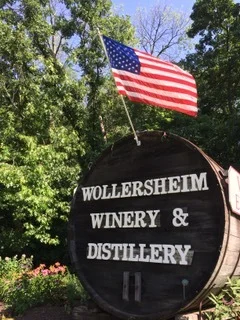Where are we now? (Bet you didn't guess Wisconsin!)
Discovering Sonoma Roots In a Prairie Du Sac, Wisconsin Vineyard
The science of Sonoma’s viticulture was birthed in a series of pre-Civil War events and influenced by the nation’s Gold Rush. Prairie du Sac, Wisconsin celebrated the arrival of Count Agoston Haraszthy from Pest, now Budapest, Hungary in April of 1840. He was attracted by America's freedom and the escape from the stifling feudal system led by the Hapsburgs in Vienna.
He acquired a panorama of hillside land along the Wisconsin River for $400. The vineyard he planted was for his own use but found the cold winters a limiting factor. On hearing about the Sutter’s Mill discovery of gold in 1848, the flamboyant immigrant abruptly moved his base to California in April of 1849. He founded the Buena Vista Winery in Sonoma, introduced more than 300 hundred European grape varieties to the area and went on to become the first California Wine Commissioner. Today Agoston Haraszthy is recognized by many as the “Father of California Viticulture”. He was inducted into the Vintners Hall of Fame in 2007.
Peter Kehl, a fourth-generation winemaker hailing from Rhineland, Germany, acquired and replanted the Wisconsin land in 1856. His plantings didn’t survive the ultra-cold winter of 1899 and that property reverted to dairy farming until Robert and JoAnn Wollersheim purchased the farm and restored the vineyard with more winter-tolerant varietals such as the French Marechal-Foch. The property is now recognized as a National Historic site.
The Wollersheims engaged in a fortuitous 1984 exchange program that brought in Phillippe Coquard and his winemaking expertise. His credentials reach back to a 13 generation wine family in Beaujolais, France. He has since married the Wollersheim’s daughter. Today Phillippe continues his critical role, saying “I never come to work. I come to the winery.”
This sector of Wisconsin is geologically important in adding a richness to the wine and in growing its white oak trees for the aging-barrels. It is referred to as the Driftless Area, characterized by its soil without the “drift” normally left behind by glaciers. Serendipitously, the local cows convert the grasses to a milk favored by Wisconsin cheesemakers. Local, local and local make this area very visit-worthy.
Philippe created a Fumé style wine in 1988, seeking to add a fruitier option for those joining the growing ranks of wine drinkers. The semi-dry Prairie Fumé quickly earned many awards and became Wisconsin's #1 choice at about $10 per bottle.
My personal tasting focused on the reds with the clear winner being the Domaine Reserve 2017. The oldest vines together with 14 months of aging in those lightly charred white oak barrels yielded a very enjoyable complexity. Wollersheim's Special Reserve is featured and enjoyed at the nearby Ishnala Restaurant, Wisconsin’s #1 Supper Club.
A complete list of wines is available online: https://www.wollersheim.com/product-category/all-wines/
Are you Thirsty for More?
Please subscribe to our blog below, and follow us on social media by clicking the icons at the top of our page.
Cheers!









